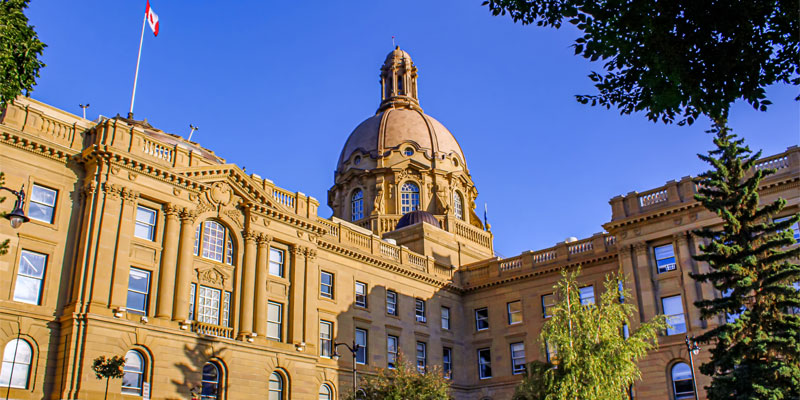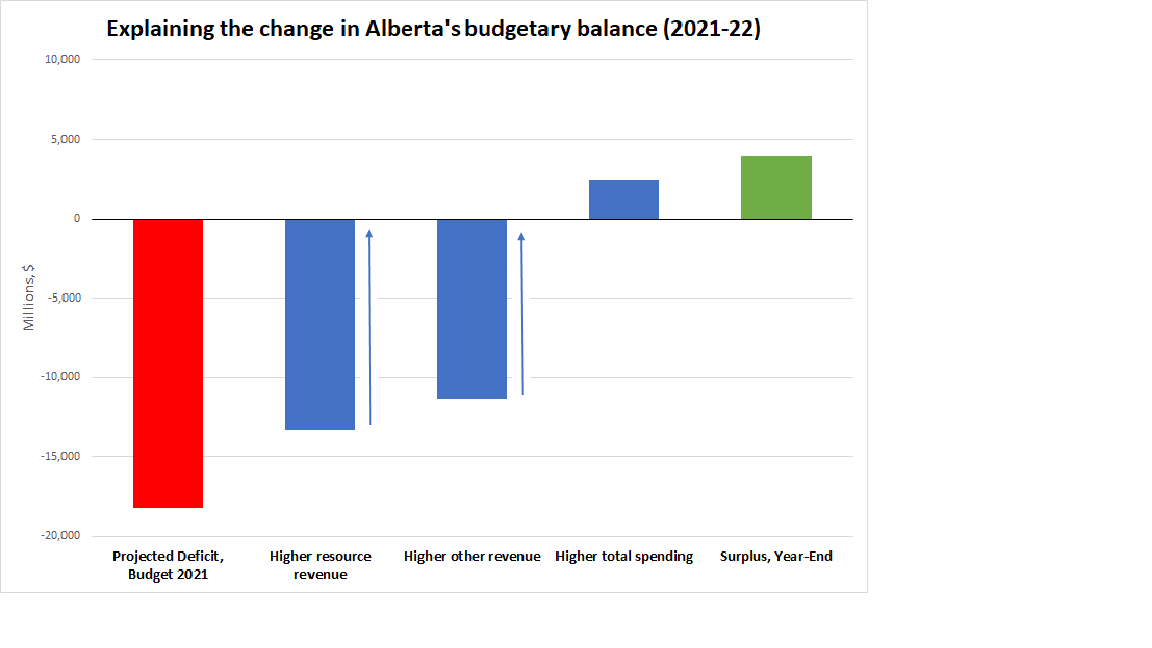Resource revenue drove Alberta’s huge fiscal turnaround in 2021-22

In the recent year-end report, Alberta’s provincial government touted a $3.9 billion surplus in 2021-22—the first surplus in seven years—and a massive improvement from the $18.2 billion deficit that was initially projected in Budget 2021.
In other words, the province experienced a fiscal turnaround worth $22.2 billion. But what exactly drove the rapid change in Alberta’s fortunes?
The below figure breaks down the change in Alberta’s budgetary balance from Budget 2021 to the year-end update. As shown, the single largest contributor was higher non-renewable resource revenue, which includes natural gas and oil royalties, related to higher commodity prices. For context, the West Texas Intermediate (WTI) oil price, a common benchmark, was originally forecast to average US$46.00 per barrel in 2021-22, but by the end of the year, it had averaged US$77.03 per barrel. Overall, non-renewable resource revenues were $13.3 billion higher than projected in Budget 2021, the majority of the fiscal improvement.

The second contributor was “other revenue” sources, including personal and corporate income tax revenue. Higher “other revenue” accounts for $11.3 billion of the fiscal turnaround. (It’s worth noting that higher commodity prices also contribute to higher corporate income tax revenue and personal income tax revenue.)
In contrast, an increase in total spending created a drag on the fiscal turnaround. Indeed, according to the year-end report, total spending was $2.5 billion higher than originally planned in Budget 2021. Of this, spending on programs increased by $2.6 billion, while debt-servicing costs were reduced by $123 million.
These are important insights. As the Finance Minister himself emphasized, commodity prices are inherently volatile. Relying on a rebound in one-time resource revenue to balance the budget will only lead to more deficits once commodity prices inevitably decline at some point in the future, as we’ve seen time and time again in Alberta. Higher spending will only compound these challenges as Alberta’s ongoing spending levels move further and further apart from ongoing revenues.
Alberta’s fiscal improvement is good news for the province, but unless the government makes significant policy changes—such as reducing spending and/or saving for the future—it will only last so long as higher commodity prices do.
Author:
Subscribe to the Fraser Institute
Get the latest news from the Fraser Institute on the latest research studies, news and events.

